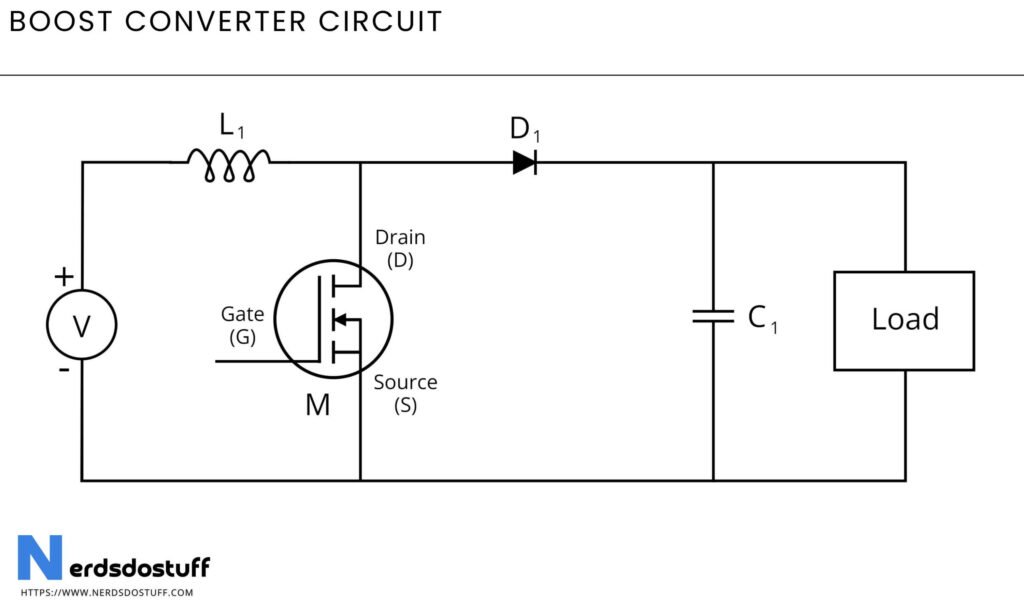What is Boost Converter ?
A boost converter is a type of DC-DC converter that increases the voltage level of a DC input to a higher voltage output. It achieves this by utilizing the principle of energy storage and transfer through an inductor and capacitor. The boost converter consists of a switching element (often a MOSFET), an inductor, a diode, and a capacitor. During the on-state of the switching element, current flows through the inductor, storing energy in its magnetic field. When the switching element turns off, the inductor releases this stored energy, causing the voltage across it to reverse polarity. The diode conducts, allowing the inductor’s energy to flow into the output capacitor, thus boosting the output voltage to a level higher than the input voltage.
Boost Converter Circuit Diagram

Working of Boost Converter
- Step 1 (Transistor ON): Initially, the transistor is turned on. This allows current to flow from the input voltage source through the inductor and the transistor.
- Step 2 (Inductor Charging): While the transistor is on, the inductor stores energy in the form of a magnetic field. The current through the inductor increases linearly.
- Step 3 (Transistor OFF): After a certain period (determined by the duty cycle), the transistor is turned off. Now, the inductor current cannot flow through the transistor. Instead, it flows through the diode and the load.
- Step 4 (Inductor Discharging): As the transistor is off, the inductor releases its stored energy. The energy stored in the inductor’s magnetic field causes the current to continue flowing through the load, effectively boosting the voltage across the load.
- Step 5 (Regulation): By adjusting the duty cycle of the switching transistor, the output voltage can be controlled. A higher duty cycle results in a higher output voltage, and vice versa.
Applications of Boost Converter
- Battery-Powered Devices
- LED Drivers
- Photovoltaic Systems
- Electric Vehicles (EVs) and Hybrid Vehicles
- High-Voltage Power Supplies
- Wireless Communication Systems
- HVAC Systems
- Energy Harvesting
- Electric Fence Chargers
- Power Factor Correction




